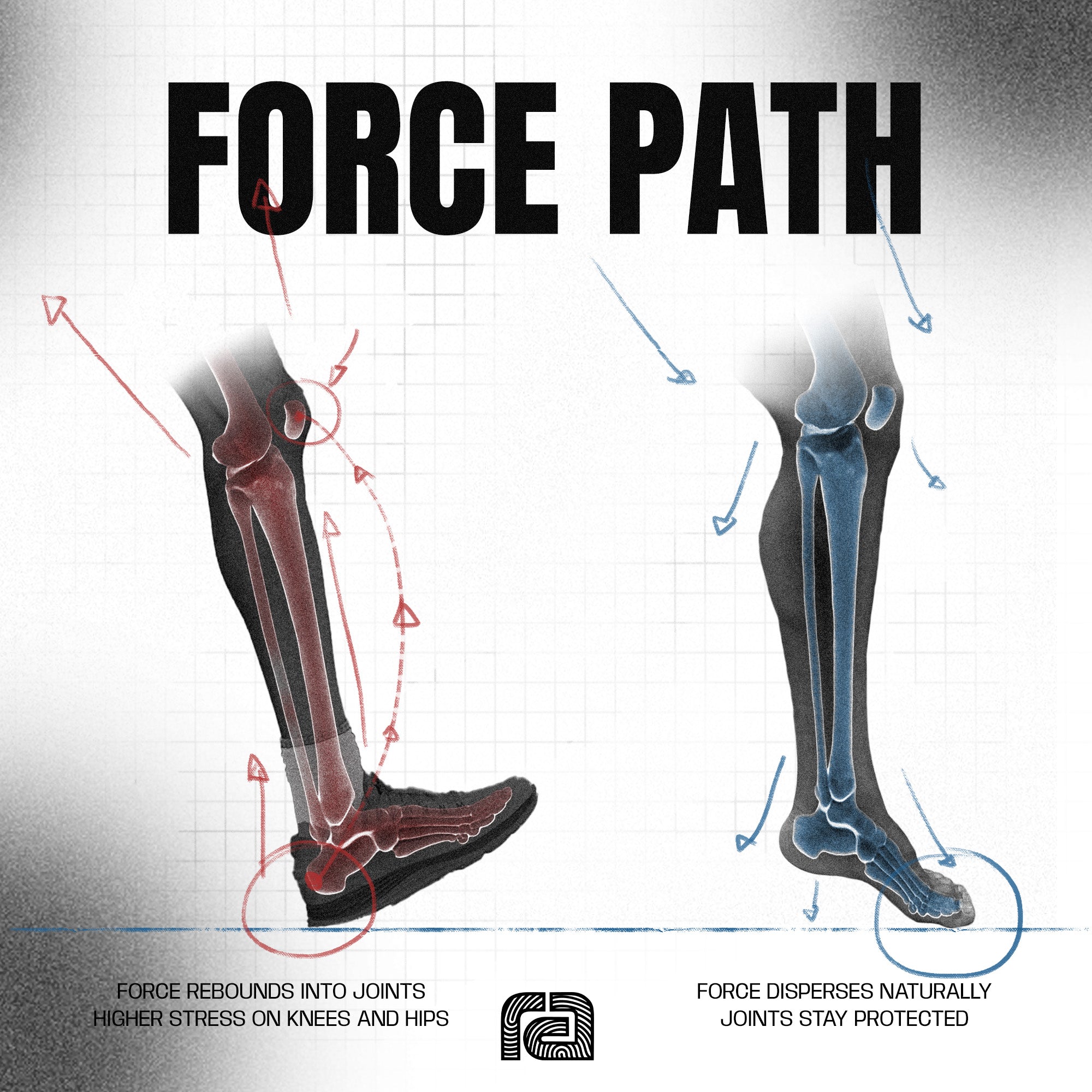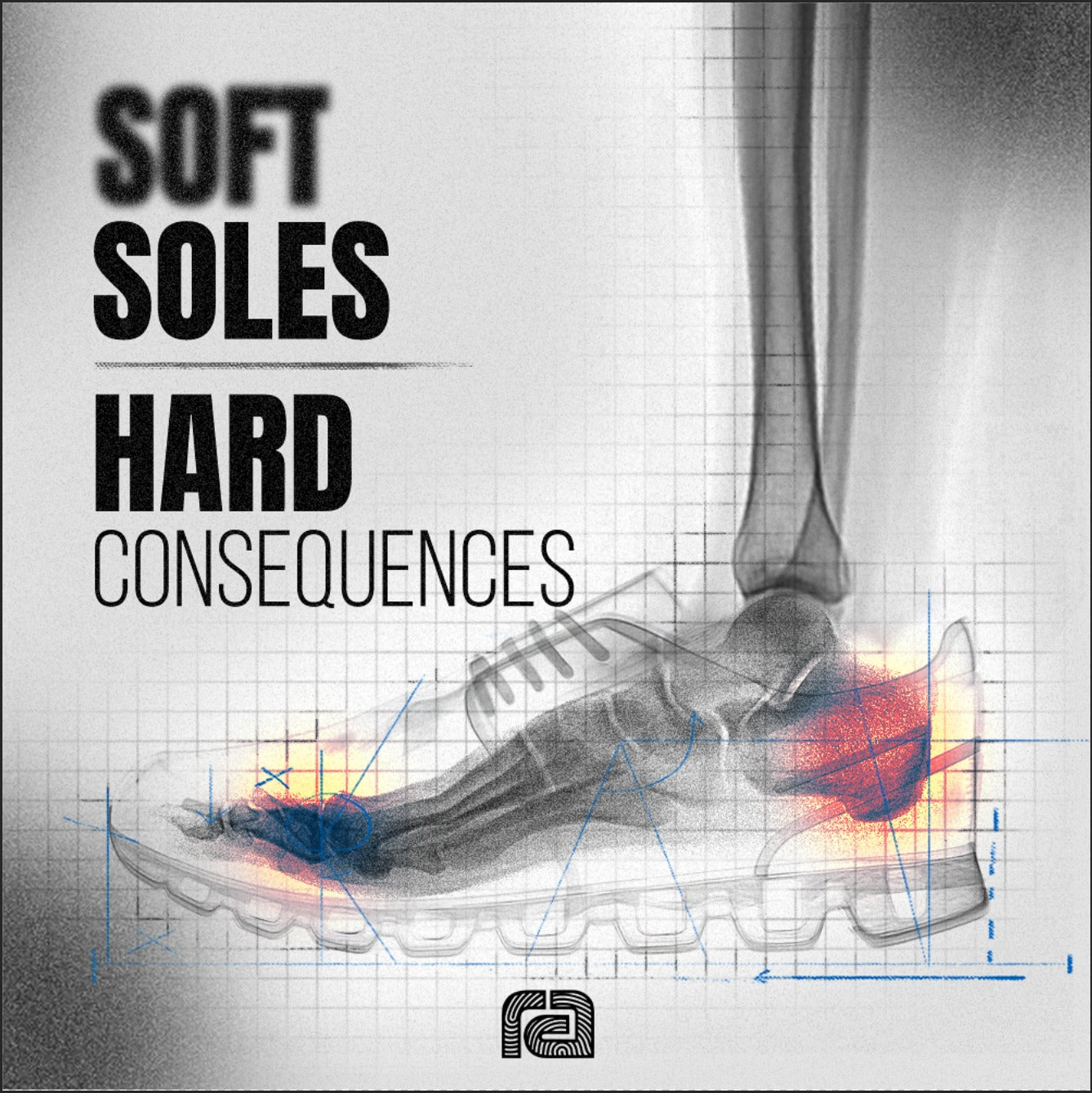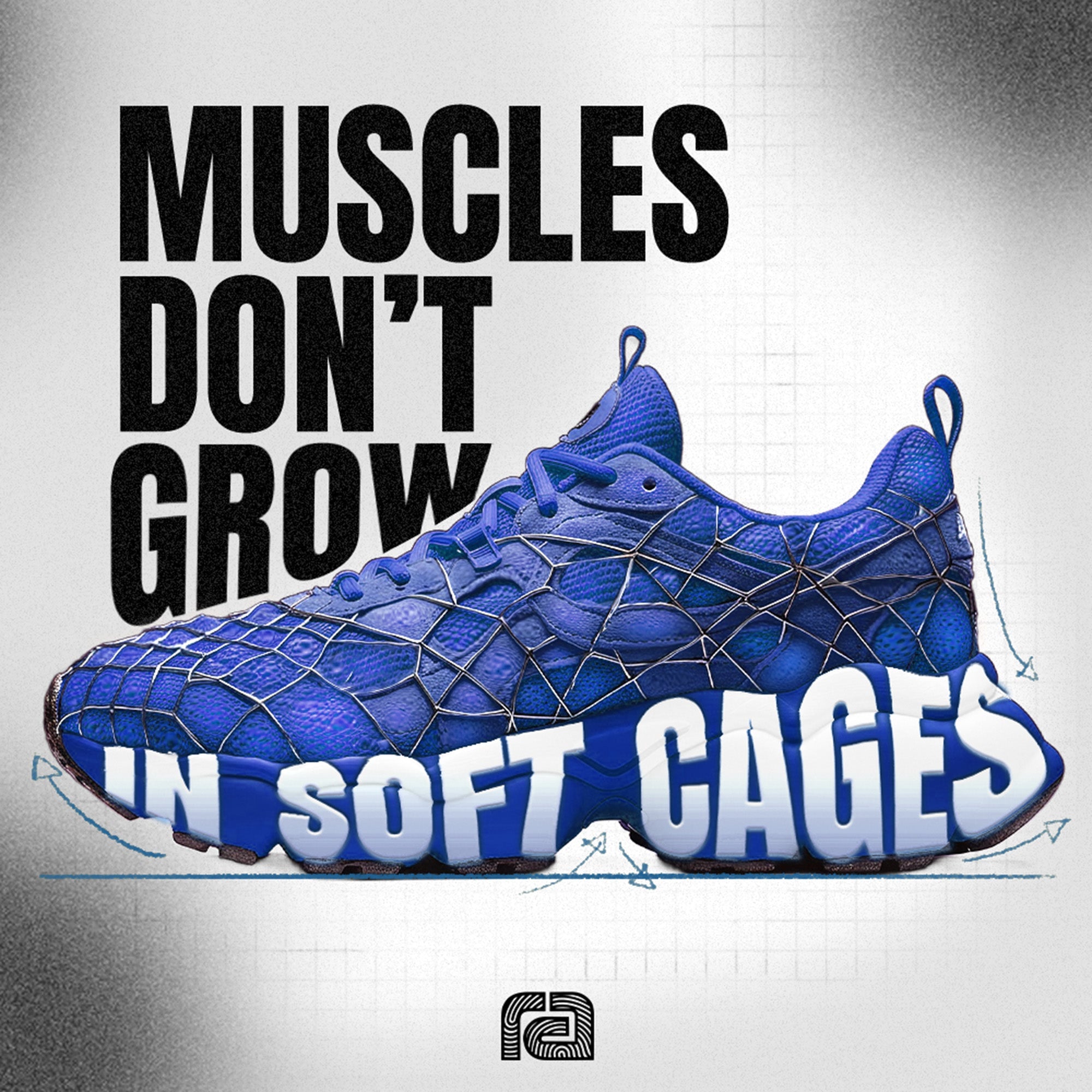
Less Shoe, More Go: The Surprising Science Behind Running Economy
Barefoot and minimalist footwear might just be the performance edge you’re not feeling.
Introduction
You don't always need more to go further.
The running shoe industry has long pushed the narrative that better cushioning and high-tech stability features mean better performance. But a 2016 meta analysis suggests the opposite: when it comes to running economy, less might actually be more.
The Study: What Was Analyzed
Before we dive in, a note on terminology: “True barefoot” refers to running with no footwear at all. “Barefoot footwear” (like minimalist shoes) offers minimal interference—zero drop, thin sole, wide toe box—but still provides a barrier between foot and ground. This study analyzed both groups separately but found similar performance benefits. Researchers Raymond Cheung and Shu Ngai conducted a meta-analytical review, analyzing data from 13 controlled studies involving 168 trained runners. Their goal: evaluate how different footwear, standard cushioned shoes, minimalist shoes, and barefoot conditions impact running economy (RE), which is essentially how efficiently a runner uses oxygen at a given pace.
Key Findings
-
-
-
-
-
-
- Barefoot vs. Standard Shoes: Barefoot running significantly improved running economy compared to traditional running shoes.
-
- Minimalist Barefoot Shoes vs. Standard Shoes: Minimalist shoes also led to notable improvements in running economy.
-
-
Barefoot vs. Minimalist: No statistically significant difference—both performed similarly well.
-
Barefoot vs. Minimalist: No statistically significant difference—both performed similarly well.
-
-
-
-
-
"The present meta-analysis provides evidence that barefoot and minimalist shoes result in better running economy than traditional footwear."
— Cheung & Ngai, 2016
Running economy improvements are especially important for long-distance runners, where marginal oxygen savings compound over time and can make the difference between burnout and breakthrough.
Why This Matters
Improved running economy means:
-
-
-
-
-
-
- Lower energy requirement per kilometer
- Delayed fatigue
-
Greater overall performance
-
-
-
-
-
Minimalist and barefoot footwear may offer this edge by:
-
-
-
-
-
-
-
Reducing unnecessary shoe weight
-
Enhancing proprioception and foot-ground feedback
- Encouraging more natural, efficient gait patterns
-
-
-
-
-
-
This isn’t just about less foam—it’s about freeing the foot to function as designed.
Rethinking the Performance Shoe
For decades, performance was synonymous with engineering. But the data suggests that the most advanced technology may already be under your ankle joint.
Natural mechanics don’t need enhancement, they need permission.
This doesn’t mean every runner should go barefoot tomorrow. Transitioning requires adaptation and care. But it does mean the conversation is shifting:
-
-
-
-
-
-
-
From more tech to better biomechanics
-
-
-
-
-
From features to freedom
-
-
-
-
-
-
Three Assumptions This Study Breaks
-
-
-
-
-
-
-
Assumption 1: “Cushion = Performance”
In fact, added cushioning often means added weight—hurting economy. -
Assumption 2: “Shoes should do the work for you”
The more the shoe does, the less your foot does. Over time, that matters. -
Assumption 3: “Barefoot and minimalist are niche”
They’re not fringe—they’re backed by repeated, peer-reviewed data.
-
-
-
-
-
-
Conclusion
This study confirms what many have felt intuitively and others have measured biomechanically: freeing the foot can fuel performance.
Reference
Cheung, R.T.H., & Ngai, S.P.C. (2016).
Effects of footwear on running economy in distance runners: A meta-analytical review.
Journal of Science and Medicine in Sport, 19(3), 260–266.
PubMed ID: 25819704



